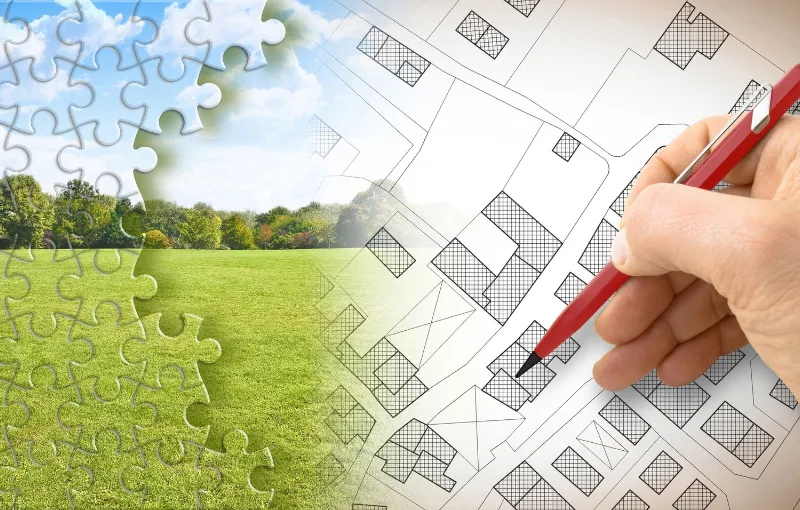Freshwater
Concept: Creating a light, airy, character-filled three-level Hampton-style beach home on a small corner site

The Minns Government, characterised by bold initiatives to confront the prevailing housing crisis, is actively pursuing new zoning laws in New South Wales designed to usher in an era of new, strategically located, low-and mid-rise homes to address the imperative need for housing diversity.
Local councils independently establish regulations governing the permissible types of residential structures within their respective jurisdictions. Regrettably, these regulations often fall short of accommodating the evolving housing requirements of successive generations, particularly in proximity to vital infrastructure and social amenities.
In October, the government discerned a substantial void in housing density approvals.
Terraces and 1-2 storey unit blocks, allowable under R2 zoning, were identified in only two of the 32 Local Environmental Plans (LEPs) in Sydney—constituting a mere six percent of the city’s LEPs. This regulatory oversight, colloquially termed the ‘missing middle,’ has overlooked the potential of low-rise density amidst a burgeoning housing crisis.

The crux of this discourse lies in the proposed reforms that can redefine the housing landscape in NSW. The reforms encompass:
Dual Occupancies: Authorisation for duplexes (two separate homes on a single lot) in all R2 low-density residential zones across NSW.
Terraces, townhouses, and two-storey apartment blocks: Permission for these architectural typologies near transport hubs and town centers in R2 low-density residential zones across the Greater Sydney region, Hunter, Central Coast, and Illawarra (Six Cities region).
Mid-rise apartment blocks: Allowance for mid-rise apartment blocks near transport hubs and town centers in R3 medium-density zones and appropriately designated employment zones. This promises an augmented housing inventory within a brief 10-minute walk from essential amenities.

To operationalise these reforms, the government will introduce a State Environmental Planning Policy (SEPP). Simultaneously, local councils are strongly encouraged to align their planning regulations with these new policies or, ideally, surpass them. Should a council’s regulations meet or exceed the new NSW Government policy, the State Government’s regulatory adjustments will not be imposed.
These reforms transcend mere construction initiatives; they signify a concerted effort to cultivate communities, fortify connectivity, and contend with the exigent housing needs of our era.
As we anticipate the realisation of these changes, it becomes evident that the Minns Government is taking substantial strides towards fostering a more sustainable and inclusive housing future.
A pivotal driver behind the burgeoning appeal of bespoke developments is the malleability afforded by regulatory frameworks. Notably, under an R2 zoning category, one can actualise a multi-residential development, courtesy of the State Environmental Planning Policy (NSW). This distinctive latitude presents many prospects for discerning investors and developers, rendering developments a positive choice for those pursuing robust and gratifying investments.
To understand more about the upcoming changes to zoning regulations on the North Shore and the opportunities for development and/or how they may impact your home, we are able to assist you in navigating the changes as more detail is provided by both the State and Local Governments.
When you are looking for a highly reputable architectural firm with the experience, skill sets, and financial acumen to bring your project to life, contact us and experience a new level of professionalism and service.
Recent changes include updated R2 residential zoning guidelines, expanded SEPP provisions such as Seniors Living and State Environmental Planning Policies, and relaxed rules for dual occupancy and small-scale infill to support increased density and housing diversity.
The new rules open opportunities for dual occupancy, townhouses, renewable-friendly homes, and age‑appropriate housing. They provide flexibility in setbacks, total floor area, and minor variations under SEPP, helping landowners unlock greater development potential.
Zoning reforms primarily impact Sydney’s North Shore, Northern Beaches, and inner suburbs where R2 zoning and SEPP frameworks are common. These changes are particularly relevant in councils like Ku‑ring‑gai, Willoughby, North Sydney, and Northern Beaches.
We conduct early feasibility assessments, zoning analysis, site-scale planning, and strategy based on the new regulations. We interpret how reforms affect site potential and guide clients from concept to DA approval using compliant design-led approaches.
Yes. Many of the new provisions support design-led multi‑dwelling homes, townhouses, and seniors housing under SEPP, especially in R2 zones. Our expertise helps translate zoning changes into real-world design and development outcomes.
Discover case studies of dual occupancy and development projects
Start with a zoning and feasibility consultation—either remotely or in-person. We’ll assess your site under the latest rules and recommend development paths that optimise value while complying with council and SEPP frameworks.
The Minns Government is introducing zoning reforms to combat the housing affordability crisis by enabling diversified, low- to mid-rise housing—including duplexes, terraces, townhouses, and mid-rise apartments.
The policy relaxes zoning near transport hubs and town centres to accommodate greater housing density. This boosts proximity to public transport, reduces urban sprawl, and improves access to employment and civic life.
Implementation of these reforms will occur through a new State Environmental Planning Policy (SEPP). Local councils are encouraged to voluntarily align—or better—their planning regulations with the SEPP.
With R2 zoning now allowing multi-residential development, property owners and developers gain unprecedented flexibility. Transforming single dwelling lots into duplexes or boutique.
Managing Director & Nominated Architect
NSW Architect Registration No. 5924
With over 30 years of architectural experience, Brett Churcher leads Playoust Churcher Architects with a rare combination of design expertise and commercial insight. As a registered architect and Managing Director, Brett has played a pivotal role in delivering high-end single residential homes and boutique medium-density developments across Sydney’s North Shore and beyond.
Brett’s unique strength lies in his deep understanding of both architectural design and the Sydney property market. His valuation background enables him to align creative vision with practical feasibility, ensuring each project achieves both aesthetic excellence and financial viability.
At Playoust Churcher, Brett drives the studio’s growth, strategy, and leadership, while remaining closely connected to what matters most: the client. His ability to see the bigger picture from a client’s perspective and to guide projects seamlessly through the design process is at the heart of his role and reputation.

Reach out to Brett to explore how Playoust Churcher can bring it to life—with clarity, creativity and confidence.
Concept: Creating a light, airy, character-filled three-level Hampton-style beach home on a small corner site
Concept: Adapting a beautiful family heritage home in a quiet street on a large site to suit the family’s lifestyle
Concept: Designing a new family home that maximises the views and introduces a sense of open space
Concept: A complex yet successful renovation of this stunning heritage home in a conservation area
Concept: A 1970s build transformed into a bright, open design maximising stunning harbour views
Concept: A complete rebuild of half the property over two levels, whilst also incorporating the property next door
Concept: A majestic holiday home that pushes the design envelop, blending sustainable materials and natural light
Concept: A major ground floor renovation of a large estate with a new three-car garage and 14 metre pool
© Copyright Playoust Churcher 2025 All rights reserved. Website by Brilliant Digital.
We live and work on the lands of the Gadigal people of the Eora nation. We acknowledge their traditional custodianship of the land and pay respects to their Elders past, present and emerging.